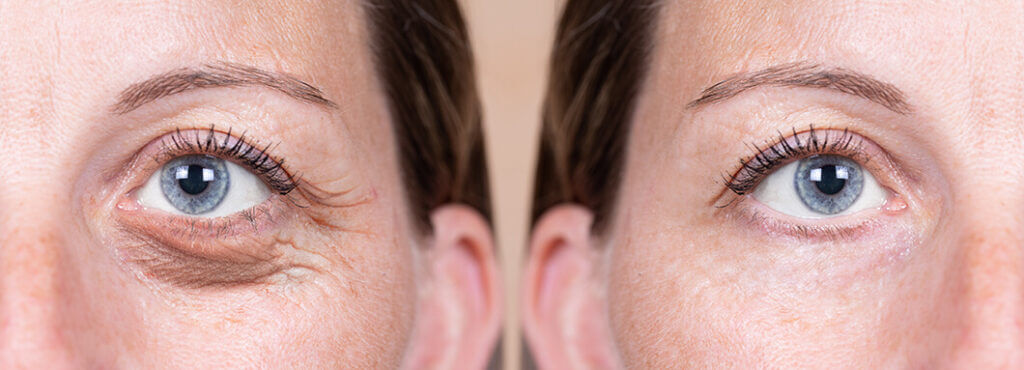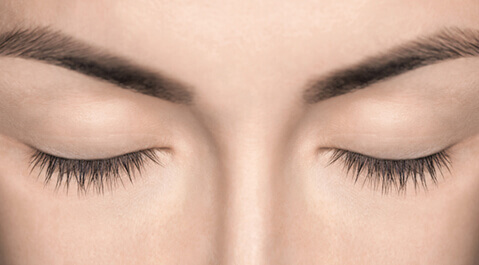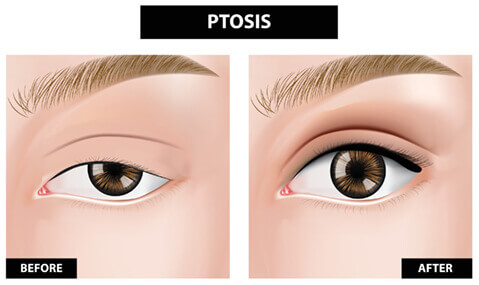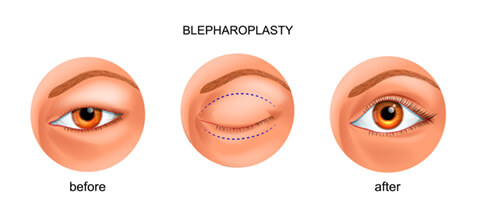Eyelid Condition



Eyelids, though external, have an important role in vision. The eyelids provide the mechanism by which the cornea is bathed in tears and protected from trauma and the elements. If the lids do not function as designed, the patient may experience pain, irritation, tearing, visual field constriction or more serious consequences. While both disease and trauma can affect the eyelids, the most common cause of eyelid dysfunction is normal change that comes with age. As the skin becomes less elastic and the muscle tissue loses tone, a variety of symptoms can occur. The good news is that lid repair procedures are usually fairly straightforward, highly effective and often covered by medical insurance.
Below you will find a few of the more common conditions and corrections. If you would like to learn more about your surgical options for eyelid repair, please schedule an appointment with us today.
Common Eyelid Conditions
Ectropion
Ectropion is a condition whereby the lower eyelid sags down and may even roll outward (ecto). Symptoms can include watering of the eye, tears running down the face, blurred vision and dry eye. The repair is a shortening of the eyelid margin and reattachment slightly higher to regain the tension and position normally found in youth.
Entropion
Entropion is a condition whereby the eyelid rolls inward (endo). Symptoms include pain, watering of the eye, mucous, and blurred vision. The repair depends on the exact cause, but is typically a reattachment of the underlying muscle as well as a tightening of the lower eyelid that keeps the lid in proper position.

Ptosis
Ptosis is a condition whereby the upper eyelid is too low. This is usually caused by stretching of the upper eyelid levator muscle tendon over time, causing a drooping or falling effect. Symptoms include loss of superior visual field and difficulty keeping eyes open. The repair is a reattachment of the tendon to its original insertion, elevating the lid to its proper position.
Dermatochalasis
Dermatochalasis is a condition whereby the skin of the upper eyelids has become redundant, overlapping the natural lid crease–in some cases resting on the upper eyelashes. Symptoms include loss of superior and/or temporal visual field and irritation or dermatitis of skin of the lid crease. The usual repair procedure is careful removal of the excess tissue, restoring the natural lid crease.
Eyelid Surgery

Functional eyelid surgery (also known as medically necessary) is for the sole purpose of restoring vision and function. There are a variety of conditions that require surgery to restore function or to relieve symptoms. Some cosmetic procedures such as blepharoplasty can become medically necessary when the excess tissues of the eyelid interfere with vision and disrupt the superior and peripheral visual field. The criteria for determining a procedure as functional versus cosmetic is published by the insurance companies and so may vary from one plan or carrier to another. Our surgeons and staff will document findings and perform tests to accurately determine the medical impact of your condition.
What to expect

Most surgeries are performed at Cascadia Surgical, adjacent to Cascadia Eye’s Mount Vernon-Little Mountain clinic. On occasion, the nature of the surgery will require deeper sedation and those will be performed at a separate surgery center in Bellingham. Regardless of the facility, all procedures are out-patient and most take less than an hour to perform. You will briefly meet with the surgeon immediately prior to surgery to confirm the surgical site and to answer any final questions.
Following eyelid surgery, you can expect bruising and swelling for approximately two weeks. Discomfort is usually mild and relieved with ice, rest and Tylenol. Your vision may also be temporarily affected by blurring, double-vision, light sensitivity, and tearing during the early days of the recovery process. Most patients return to work or other normal activities within 4-5 days following surgery. Certain activities, such as swimming or strenuous workouts are prohibited until the surgeon decides it is safe for you to perform them again. In any case, your surgeon will give specific instructions prior to discharge and at your post-op visits.
Am I a candidate?
The very best way to know whether your symptoms can be relieved is to schedule a consultation. Visits of a functional or medical nature are billable to your insurance (even if the results do not yet meet medical necessity criteria set by your insurance). In either case, we will provide recommendations based on your needs and desires and make sure all your questions are addressed.
Dr. Jean Kassem
Dr. Jean Kassem at Cascadia Eye is an oculoplastics surgeon–a vision care specialist with additional training and expertise in the tissues surrounding the globe of the eye. This includes the orbits, lids, nasolacrimal ducts, and more. He treats benign and cancerous masses of the lid and orbit; blockage of the tear drainage pathway; eye socket fractures; blind, painful eyes requiring removal; Grave’s disease and other diseases; and the more common age-related lid conditions mentioned above. He also performs eyelid surgery as well as Botox treatment for those who desire a more youthful, rested appearance.
Contact Cascadia Eye
If you would like to learn more, or if you would like to schedule an appointment or consultation with our talented doctors at Cascadia Eye, please contact us today. You may also pre-shop for glasses at our online pre-shopping page any time. Our entire team is committed to protecting and improving your vision and the health of your eyes. We are happy to answer any questions you might have!
In addition, join us on Facebook, Instagram or YouTube to ask your questions about eyes, exams, and our practice. We’d love to hear from you – and there might be a blog to address your questions in the future.



